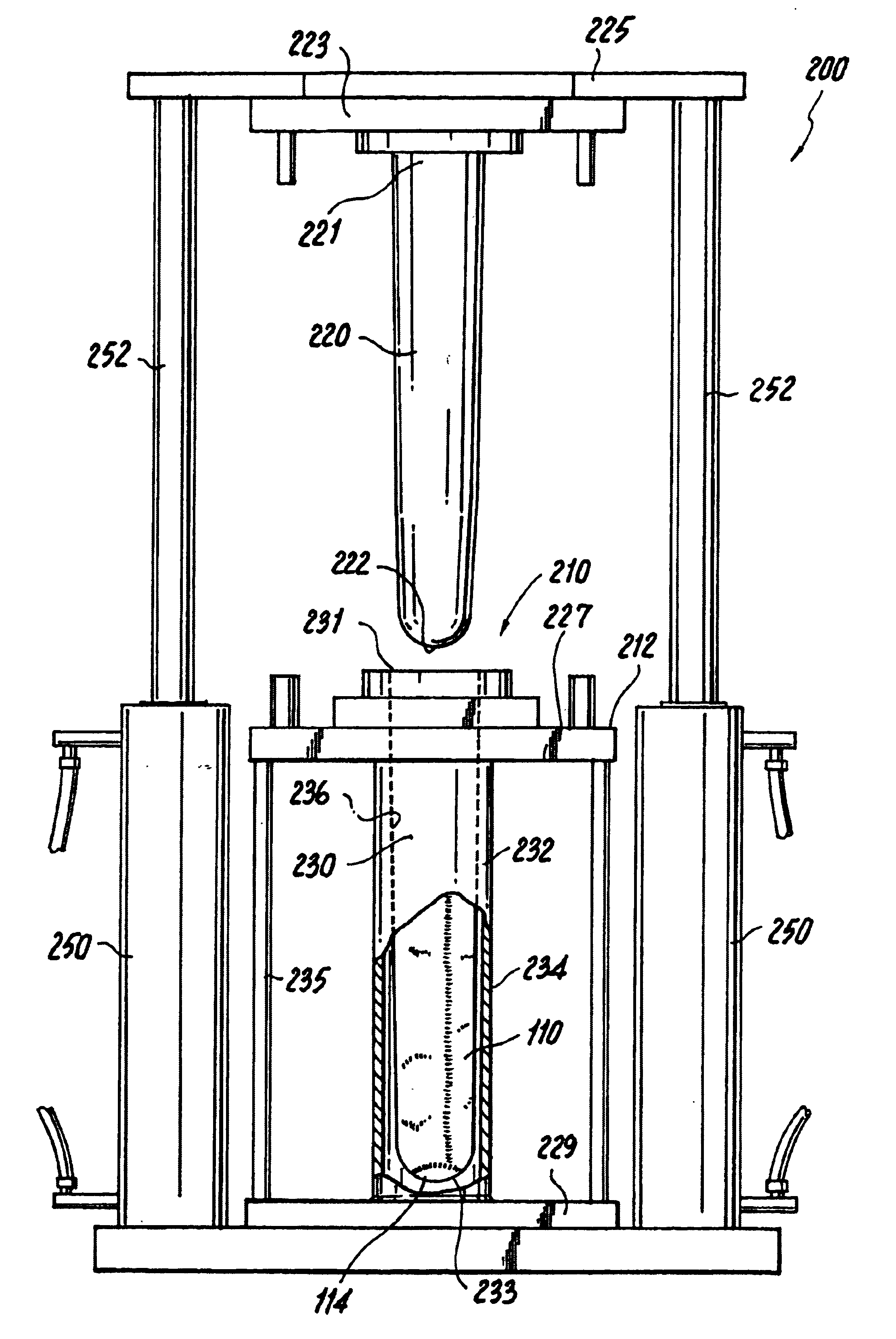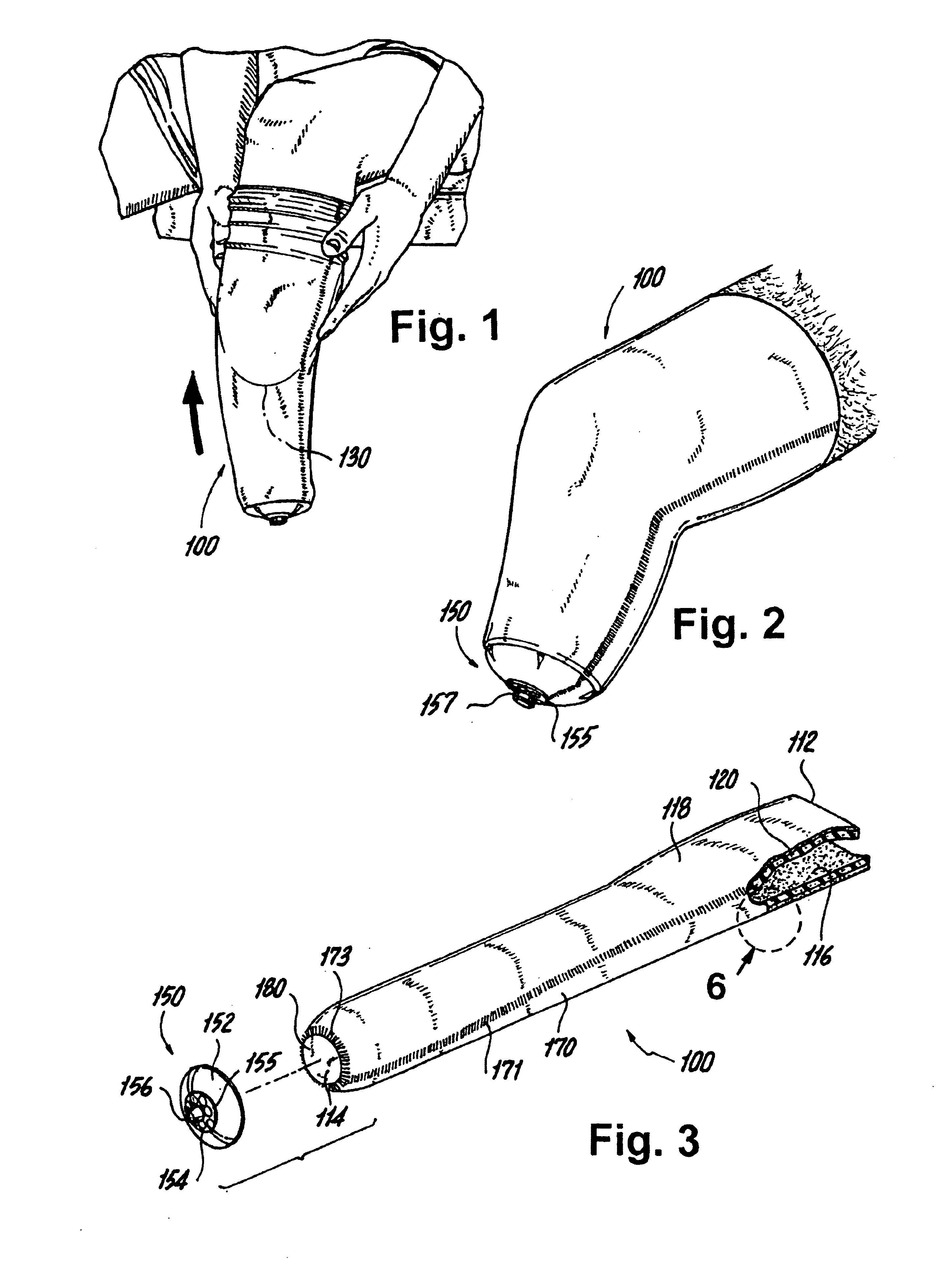Process for applying a cushion material to an article
a cushion material and article technology, applied in the field of cushion material application to articles, can solve the problems of amputees experiencing wear discomfort, interface can become an area of discomfort, and cannot provide a form fit of amputee's residuum, etc., to achieve convenient change, easy control of precise thickness, and enhanced precision
- Summary
- Abstract
- Description
- Claims
- Application Information
AI Technical Summary
Benefits of technology
Problems solved by technology
Method used
Image
Examples
Embodiment Construction
Referring to FIGS. 1 through 6, a cushioned liner (e.g., a prosthetic liner) 100 according to one exemplary embodiment is illustrated. The cushioned liner 100 is formed of a liner body 110 having a form fitting generally tubular shape with an open end 112 into which an amputation stump (residual limb) 130 can be introduced and a closed distal end 114. The liner body 110 includes an interior 116 and an exterior 118 with the interior 116 being impregnated with a cushioning material to form a cushion layer 120 so as to provide a cushion between the amputee's residual limb 130 and a prosthetic device (not shown) which is to be attached to or otherwise coupled to the residual limb 130, as will be described in greater detail below.
When the cushioned liner 100 is used to couple a prosthetic device to the residual limb 130, a pin receptacle 150 is preferably provided and is attached to the distal end 114 of the cushioned liner 100 on the exterior 118 thereof. In the exemplary embodiment, th...
PUM
| Property | Measurement | Unit |
|---|---|---|
| thickness | aaaaa | aaaaa |
| thickness | aaaaa | aaaaa |
| length | aaaaa | aaaaa |
Abstract
Description
Claims
Application Information
 Login to View More
Login to View More - R&D
- Intellectual Property
- Life Sciences
- Materials
- Tech Scout
- Unparalleled Data Quality
- Higher Quality Content
- 60% Fewer Hallucinations
Browse by: Latest US Patents, China's latest patents, Technical Efficacy Thesaurus, Application Domain, Technology Topic, Popular Technical Reports.
© 2025 PatSnap. All rights reserved.Legal|Privacy policy|Modern Slavery Act Transparency Statement|Sitemap|About US| Contact US: help@patsnap.com



